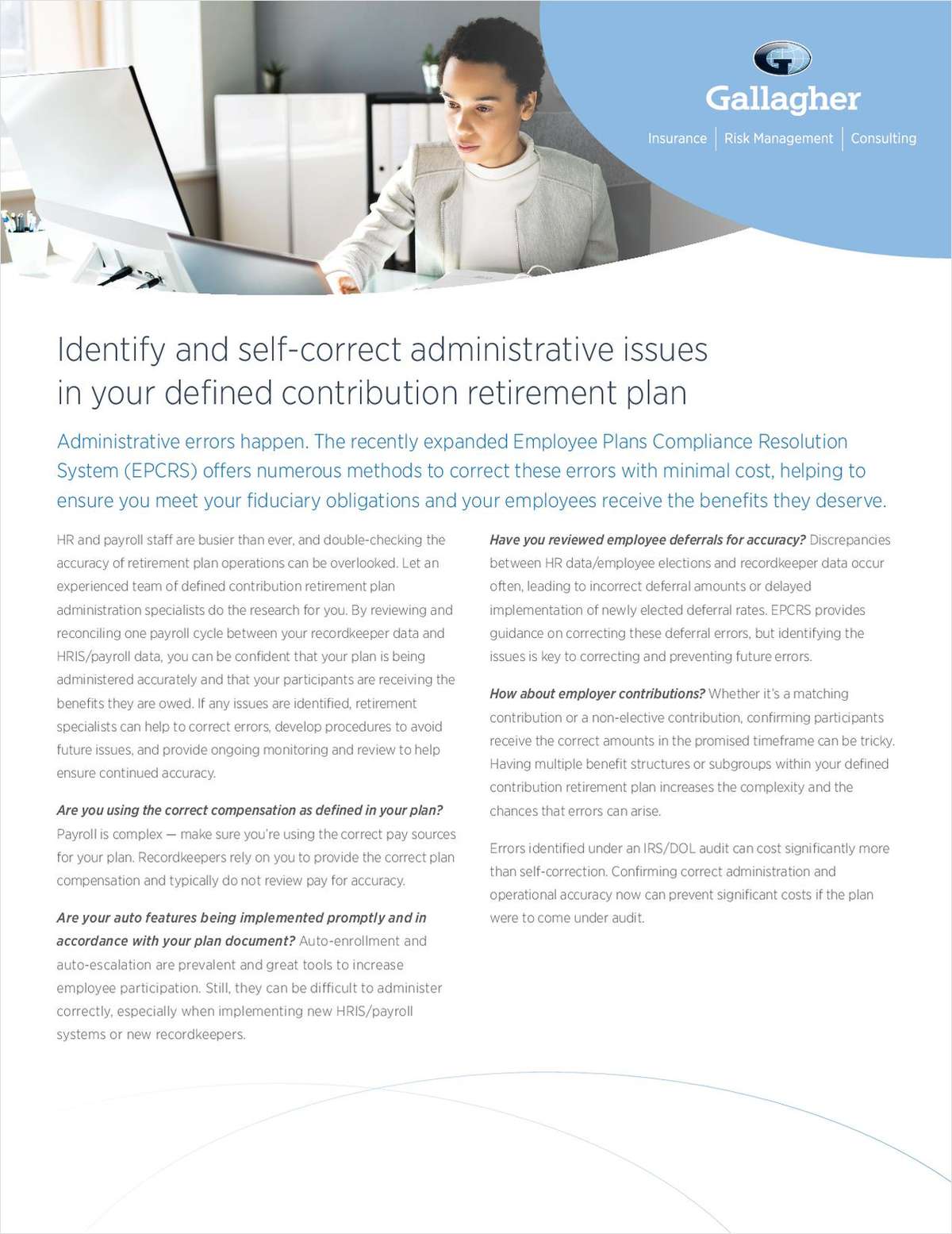Plan sponsors have loads to think about when it comes to the retirement plans they offer employees. And just because they're supposed to know the latest rules doesn't mean they actually heed them.
In a Sunday NAPA 401(k) Summit workshop, Pam O'Rourke of Integrated Retirement Initiatives, Jason C. Roberts of the Pension Resource Institute and Trent V. Sanden at UBS Institutional Consulting offered plan advisors some tips on how to ensure their sponsor clients steer clear of trouble.
Here are five you should be aware of, so that you can keep your own clients safe:
 1. Investment choices
1. Investment choices
Plan sponsors undoubtedly have some idea that they have to make good investment choices for plans, but they may not know a good investment choice when they see one. Or they may know they have to provide an appropriate qualified default investment alternative (QDIA), but not realize which criteria make a QDIA appropriate or inappropriate for their particular plan participants. For that matter, does their investment policy statement even address QDIAs?
In addition, some of the factors plan sponsors may not be considering are such things as participant risk tolerance, the likelihood of participants taking loans or withdrawals, or whether their participants will even look at a slate of investment choices or simply go with the default, even if it's not suitable for their particular needs.
According to the presenters, you should make sure that “(w)hen fiduciaries lack investment-related expertise, they are required to hire professional assistance (e.g, investment education, advice and/or management).” And, yes, you might have to give them a nudge in the right direction.
 2. Hiring experts
2. Hiring experts
OK, so plan sponsors know they have to hire someone to help them out. Do they know how to choose an expert? What should they look for, and how much should they pay? Are there benchmarks they can look for, and do they know what those benchmarks are? Can they judge impartiality? Advisors may need to point them toward sources of data that can help them make up their minds.
For that matter, can they judge whether their experts are recommending options that cost more to participants than they need to? What determines whether a cost is fair, and where should they go to find out?
 3. Oveseeing the plan (a.k.a. Administration, Part 1)
3. Oveseeing the plan (a.k.a. Administration, Part 1)
When overseeing the plan itself, some of the sponsors' responsibilities include making sure that policies are in place covering loans and distributions and making sure that contributions are successfully deposited according to plan rules and participants' designations.
Advisors may want to make sure that their sponsor clients know not only that policies are in effect, but what those policies are and who is responsible for carrying them out. Who decides whether to approve loans or withdrawals? What are the reasons for approval or denial?
 4. Reporting (a.k.a. Administration, Part 2)
4. Reporting (a.k.a. Administration, Part 2)
Fiduciaries not only have to make sure that the plan is administered properly, they also have to make sure that all relevant paperwork is sent to participants and to regulators.
Sponsors should know not only which reports, notices, forms and disclosures are required, but also who is responsible for preparing them, when they must be prepared and sent, to whom they must be provided and when (or how often).
And sponsors shouldn't forget to look to their own recordkeeping. Who is responsible for having copies of all pertinent paperwork in the files?
 5. Service providers
5. Service providers
Choosing service providers isn't a set-it-and-forget-it process. While sponsors have to consider a wide range of factors in the initial selection process, they can't just go about their business once a provider is in place and assume that everything will be fine.
Taking into account participant needs, whether participants are satisfied with the plan and actually use its services (education, automation, website features, etc.) is part of the selection process, but also part of the ongoing review of how a provider is performing. It won't do any good to choose a provider known for a whiz-bang website if a sponsor's particular group of participants never goes near the Web — nor will it help if the provider runs in-person classes filled with information that put participants to sleep instead of educating them. Maybe the provider has great experience, but not with a particular worker segment and thus fails to understand and accommodate its needs.
Then there are the questions of how the provider is compensated, whether compensation is reasonable considering the provider's expertise and the size of the plan and whether there are potential or actual conflicts-of-interest that could influence the provider's judgment.
Plan sponsors must not only stay on top of all these factors and more, but must keep records of the factors they considered when deciding whether to choose, replace or retain a provider.
Complete your profile to continue reading and get FREE access to BenefitsPRO, part of your ALM digital membership.
Your access to unlimited BenefitsPRO content isn’t changing.
Once you are an ALM digital member, you’ll receive:
- Breaking benefits news and analysis, on-site and via our newsletters and custom alerts
- Educational webcasts, white papers, and ebooks from industry thought leaders
- Critical converage of the property casualty insurance and financial advisory markets on our other ALM sites, PropertyCasualty360 and ThinkAdvisor
Already have an account? Sign In Now
© 2025 ALM Global, LLC, All Rights Reserved. Request academic re-use from www.copyright.com. All other uses, submit a request to [email protected]. For more information visit Asset & Logo Licensing.








